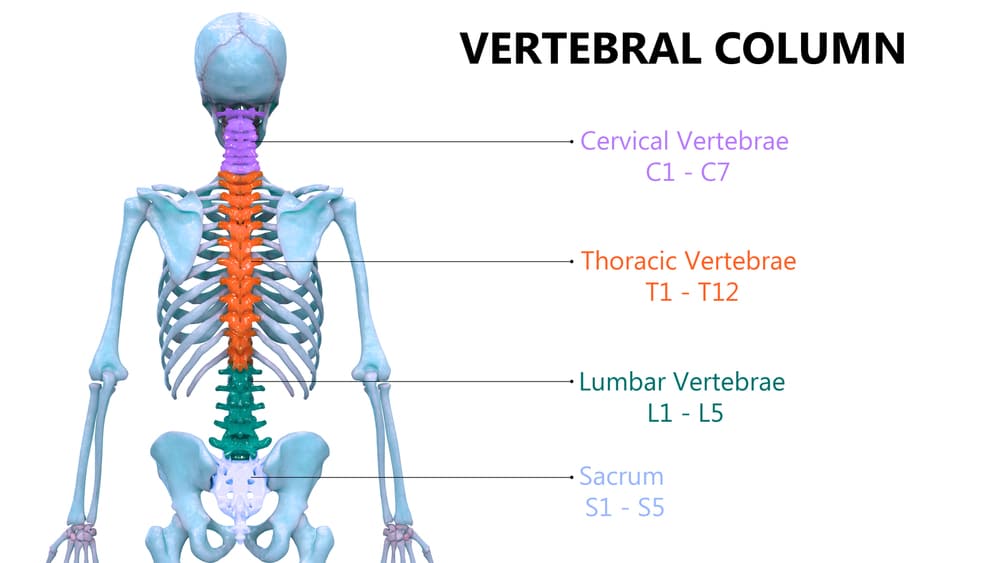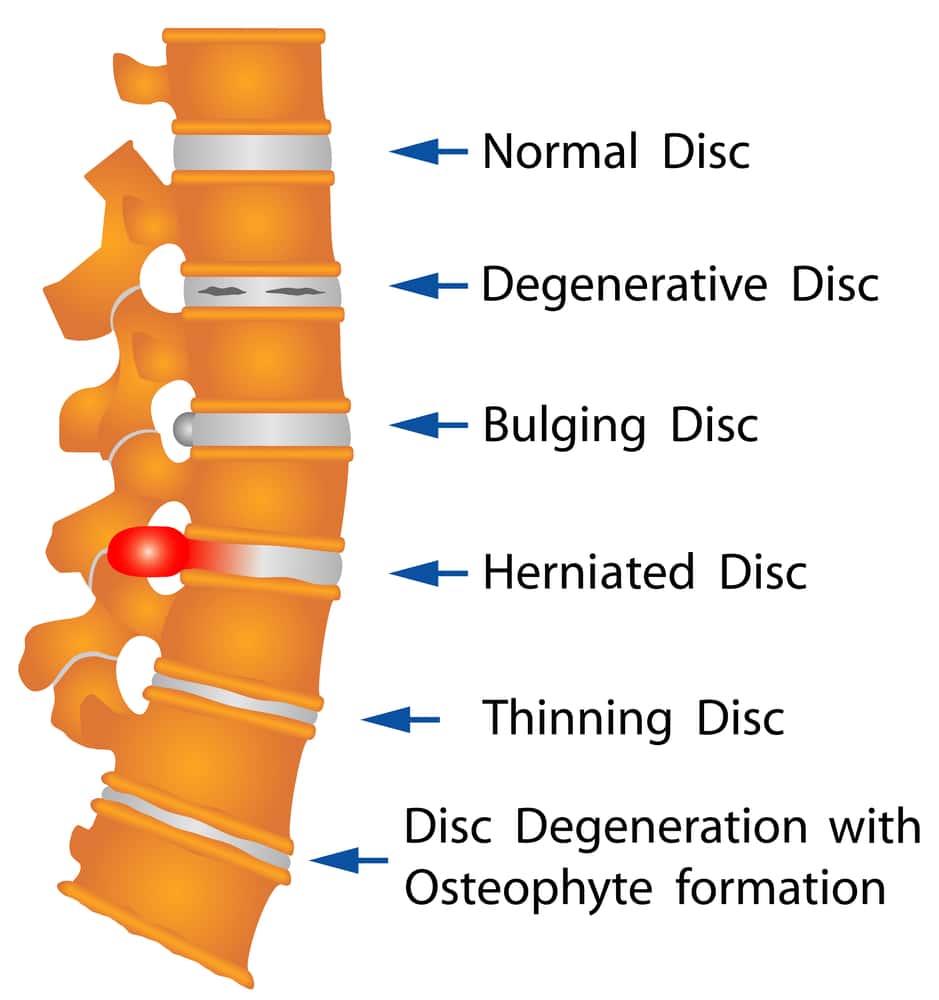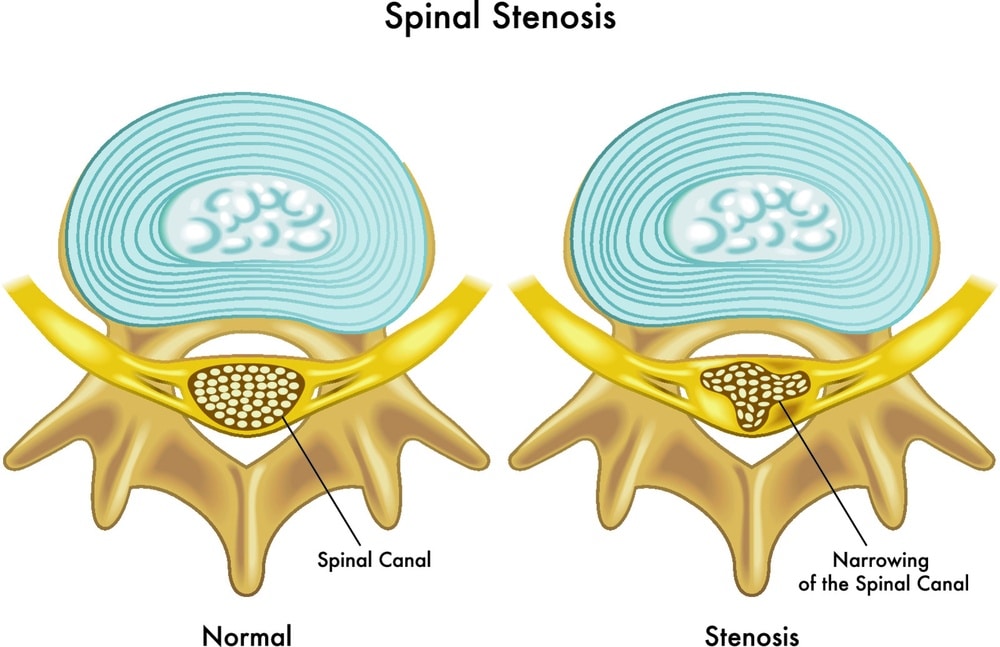The L4 vertebra is one of the five vertebrae in the lower back, located just above the sacrum. It plays a crucial role in supporting the upper body’s weight and enabling movement. Injury or degenerative changes that affect the L4 vertebra can lead to chronic pain and mobility issues.
Many patients often rely on medications to manage their pain. While these can provide temporary relief, they fail to address the real cause of pain and mask symptoms, which can delay proper diagnosis. This increases the risk of needing surgery as the condition worsens.
Regenexx offers an alternative through interventional orthobiologics, which use the body’s natural healing ability to address the root cause of low back pain. This can help patients avoid prolonged medication use and surgery.
Understanding the L4
The L4 vertebra is a key part of the lumbar spine, or the lower back. It is positioned between the third (L3) and fifth (L5) lumbar vertebrae. Together, these vertebrae play a critical role in spine stability and mobility.
The lumbar vertebrae, including L4, have a robust, wide structure. This is critical to support much of the body’s weight, which is essential for standing, walking, and lifting.

Beyond support, the L4 vertebra plays a significant role in facilitating movement. It allows for forward and backward bending, as well as twisting motions. This flexibility is vital for everyday activities, from reaching for items to performing sports.
The L4 vertebra also protects the nerve roots that travel through the spinal canal. Although the true spinal cord ends around L1 or L2 vertebrae, it then transitions into a bundle of nerves known as cauda equina. These are responsible for innervating the thigh and leg muscles, providing motor and sensory functions.
The L4-L5 Spinal Motion Segment
The L4-L5 spinal motion segment is a crucial part of the lumbar spine. It consists of the L4 and L5 vertebrae and the intervertebral disc in between, as well as surrounding ligaments and muscles. This segment is particularly important because it supports a lot of the body’s weight. It also enables a wide range of movements, such as bending, twisting, and flexing.
The intervertebral disc between L4 and L5 acts as a cushion, absorbing shocks and allowing flexibility. The two bones are connected to one another and to surrounding muscles via ligaments and tendons.
The L4-L5 segment also creates a case for several vital structures, including the following:
- Nerves: the segment houses the L4 and L5 nerve roots, part of the sciatic nerve. It also serves as protection for the end of the spinal cord, or cauda equina.
- Arteries: Lumbar arteries supply blood to the vertebrae and spinal cord.
- Veins: Lumbar veins aid in blood drainage from the lower spine.
Injuries and degenerative changes that affect the spine typically occur in the cervical and lumbar spine. In the lower back, the L4-L5 segment is the most commonly affected by conditions like degenerative disc disease and arthritis, making it a leading source of chronic pain.
Conditions and Injuries Associated with L4 Spinal Segment
Around 10% of the world’s population suffered from low back pain in 2020, making this a leading cause of disability worldwide. Often, low back pain stems from problems with the L4 or L4\L5 segment. Understanding the underlying causes of L4-related pain is essential for effective treatment and management.
Issues can arise from trauma, wear and tear, or congenital factors. Proper diagnosis and treatment are key to managing these conditions effectively.
Facet Joint Issues
Facet joint issues at the L4 level occur when the small joints that connect the vertebrae deteriorate or become inflamed. These joints ensure spine stability and allow for smooth movement between vertebrae. When they become injured or damaged, they can cause localized pain, muscle spasms, and reduced flexibility.
Over time, this can lead to chronic pain that radiates into the buttocks or thighs, particularly when standing or walking. Factors that may contribute to facet joint syndrome include aging, repetitive stress, injury, or inflammatory conditions, like arthritis.
Disc Problems
Disc problems at the L4 segment often involve the intervertebral disc located between L4 and L5. This cartilage disc acts as a cushion, absorbing shock and friction during movement.
Intervertebral discs can be affected by different conditions, including:
- Degenerative disc disease: This occurs when the intervertebral discs lose hydration and elasticity over time. This degeneration reduces the cushioning effect of the discs, leading to increased pain and stiffness in the lower back. The diminished disc height can also compress nearby nerves, such as the ones in the spinal cord.
- Bulging disc: Bulging discs occur when the disc extends outward but remains intact, without rupturing the outer wall. When this happens at the L4 level, the bulging disc can press on nearby spinal nerves. This compression can lead to pain, numbness, or tingling sensations in the lower back, hips, or legs. It can also significantly affect mobility and comfort.
Herniated disc: A herniated disc occurs when the inner gel-like core of the disc pushes through a crack in the tougher ring-like exterior wall. The herniation can irritate and compress nearby nerves, causing nerve pain radiating to the legs. If motor nerves are affected, it can also lead to muscle weakness or more severe symptoms.

Disc problems should not be left unaddressed. If untreated, lumbar spine disc herniation, especially at the L4\L5 level, can cause cauda equina syndrome (CES). This is a potentially life-threatening condition where the bundle of nerves at the lower end of the spinal cord becomes compressed. It can lead to severe pain, numbness, and loss of bladder or bowel control.
Spondylolysis
Spondylolysis is a stress fracture or crack in one of the vertebrae. This condition is often seen in athletes who engage in sports that involve repetitive back strain, such as gymnastics or football. Ninety percent of spondylolysis cases occur at the L4\L5 segment.
The fracture can cause lower back pain, especially during activity. It can also lead to muscle tightness and limited flexibility. If left untreated, spondylolysis can progress to spondylolisthesis, where the fractured vertebra slips out of place.
Degenerative Spondylolisthesis
Degenerative spondylolisthesis occurs when the vertebra slips forward due to wear and tear of the spinal joints or discs. When the vertebra slips out of position, it can compress the spinal nerves, leading to lower back pain, leg pain, and difficulty walking.
Symptoms may worsen with activity, particularly when standing or walking for extended periods.
Spinal Stenosis and Bulging
Spinal stenosis and bulging at the L4 level occur when the spinal canal narrows. This is often due to a bulging disc, thickened ligaments, or bone spurs. This narrowing can compress the nerves that travel through the lower back, leading to pain, numbness, and weakness in the legs.

Spinal stenosis is often age-related and can result from degenerative changes in the spine, such as disc bulging or arthritis. Symptoms typically worsen with standing or walking and may improve with sitting or bending forward.
Common Symptoms Experienced
The L4 vertebra is located close to the cauda equina. This bundle of nerve roots plays a key role in providing motor function and sensation to the lower leg. When these nerves become pinched or damaged, they can lead to several symptoms. Some are felt around the lower spine, while others are systemic, affecting several parts of the body.
- Sharp pain: Pain from nerve irritation or compression usually radiates from the lower back down to the leg. It can make standing or walking difficult and may worsen with certain movements.
- Numbness: Pinched nerve roots are unable to transmit sensory signals from and to the brain. When the L4 nerve roots are affected, numbness is felt in the thigh or calf. Reduced sensitivity can cause a feeling of deadness or heaviness in the leg.
- Weakness: Compression prevents motor nerves from delivering movement signals to the lower limbs. This can manifest as difficulty in lifting the foot, a condition known as foot drop. Weakness can also affect the ability to walk or maintain balance.
- Abnormal sensations: These include tingling, burning, or a “pins and needles” feeling. These sensations may spread from the lower back to the leg and foot, limiting daily activities.
Common Causes of These Conditions
Various factors can contribute to the conditions affecting the L4 vertebra. Understanding common problems can help in prevention and early intervention.
Typical causes of L4 pain include:
- External trauma from falls: Falling can impact the spine, causing herniated discs or spinal fractures. This can lead to pinched nerves and subsequent pain and numbness.
- Motor vehicle accidents: The force from car accidents can severely affect the lower spine. Whiplash or direct impact can damage discs and nerves and cause the vertebrae to slip out of position. This often results in sharp pain and weakness.
- Natural degeneration: With aging, the components of the spine are exposed to wear and tear. Discs lose hydration and elasticity, leading to conditions like arthritis or spinal stenosis. These degenerative changes can compress nerves, causing chronic pain and abnormal sensations. A 2024 study reports that degenerative changes in the spine are present in 75% of older men and 60% of women.
Other factors contributing to L4 pain include poor posture, repetitive strain, and genetic predisposition.
Common Treatments for L4 Conditions and Injuries
When experiencing lower back pain or suspecting problems with the L4 vertebrae, it is essential to seek medical attention. A trained physician will carry out diagnostic tests to determine the root cause of pain and guide treatment decisions.
Some of the common treatments prescribed include:
Natural Remedies
At-home remedies are often the first line of treatment for low back pain. They include:
- Rest: Rest can help reduce inflammation and prevent further strain on the spine. However, immobilization should be supervised by a physician, as it can lead to muscle weakness and atrophy in the long term.
- Reduce activity for a few weeks: Limiting physical activities for a few weeks allows the spine to heal and reduces the risk of worsening the condition. It’s important to avoid heavy lifting or intense exercise during this period.
Surgical
Surgery is sometimes prescribed if non-invasive methods have failed to alleviate pain. It may also be considered if the pain is interfering with daily activities or causing disability. Some surgical interventions may also be needed to repair extensive damage to the vertebrae, such as in severe osteoarthritis cases. A common surgical intervention is the L4/L5 fusion surgery.
- L4/L5 fusion surgery: This procedure stabilizes the spine by fusing the L4 and L5 vertebrae together. During the procedure, the surgeon will remove the disc of cartilage between the vertebrae. This can help reduce pain and inflammation, and it may prevent further slippage or instability in the spine. However, fusion can also significantly limit lower back movement. Learn more about this surgical intervention here.
Non-Surgical (Pain Management)
Non-surgical treatments can help manage pain and improve spine function and mobility. These include:
- Medications: Medications such as nonsteroidal anti-inflammatory drugs (NSAIDs) and muscle relaxants can help manage pain and reduce inflammation around the L4 vertebra. However, prolonged use can cause side effects, including an increased risk of heart attack, stroke, stomach ulcers, and kidney dysfunction.
- Acupuncture: Acupuncture is a non-invasive option that can provide relief by stimulating specific points in the body. A 2021 study suggests that acupuncture may be effective and cost-effective in reducing pain and improving blood circulation around the affected area.
- Physical therapy: Physical therapy helps strengthen the muscles surrounding the L4 vertebra, improving stability and flexibility. Exercises focus on reducing pain and enhancing the range of motion in the lower back to improve function.
Regenexx May Be Your Best Option
While traditional treatments like surgery, medications, and natural remedies can offer relief, they often come with side effects or limitations. The Regenexx approach offered at the Centeno-Schultz Clinic provides an alternative that doesn’t involve surgery or medications.
Addressing the spine as a single, integrated system, the Regenexx method uses advanced diagnostics to identify the causes of pain. This allows trained physicians to create customized treatment plans tailored to your specific condition. The Regenexx approach may include interventional orthobiologic procedures, such as platelet-rich plasma (PRP) and bone marrow concentrate (BMC) treatments.
These procedures use the body’s natural healing processes to target the root of the problem. This approach may offer patients an alternative to recovery and improved spine health, reducing the need for surgery or long-term medication use.
Risk Factors
Certain individuals are more at risk of experiencing conditions related to the L4 vertebra due to several factors:
- Age: Older adults, particularly those over 60, are prone to conditions like spinal stenosis, spine osteoarthritis, and disc degeneration. The natural wear and tear on the spine leads to increased vulnerability to L4-related issues.
- Gender: Low back pain is more common in females than in males. This occurs due to an array of factors, including the increased prevalence of inflammatory conditions among women and changes in hormonal levels.
- Physically demanding work: Jobs that require heavy lifting, manual labor, or repetitive motions, such as construction work or nursing, can strain the lumbar spine. Constant physical stress can lead to herniated discs, pinched nerves, faster degeneration, and chronic lower back pain.
- Obesity: Excess body weight increases the load on the lumbar spine, accelerating disc wear and tear. This added stress makes the L4 vertebra more susceptible to conditions like osteoarthritis and herniation. Having a high BMI is considered a risk factor for chronic low back pain.
- Smoking: Smoking impairs blood flow. This affects disc health, causing the discs to become brittle and prone to herniation.
- Family history: Individuals with a family history of spinal conditions like herniated discs or degenerative disc disease are at higher risk of low back problems. For example, lumbar spinal stenosis, or the narrowing of the spine canal in the lower back, is a highly genetic condition.
Can Complications Occur if These Conditions Are Left Untreated?
Untreated L4-related conditions can lead to complications.
For example, persistent nerve compression can lead to chronic pain and permanent nerve damage. This may result in lasting numbness and weakness in the legs, impacting mobility. Additionally, severe cases of nerve compression can cause loss of bladder and bowel control, which requires immediate medical attention.
Untreated problems, such as misalignments and fractures, can also worsen spinal degeneration. This leads to further disability and a reduced quality of life. Ultimately, early diagnosis and treatment are crucial to prevent these serious health issues, ensuring better outcomes and maintaining daily function.
Your L4’s Health Matters
The L4 plays a vital role in supporting spine movement and stability, which are critical for everyday activities. It is important not to let chronic or acute low back pain go untreated, as these can accelerate spine degeneration and affect your quality of life in the long term.
Make an appointment with us today to find out whether the Regenexx approach is right for you.
